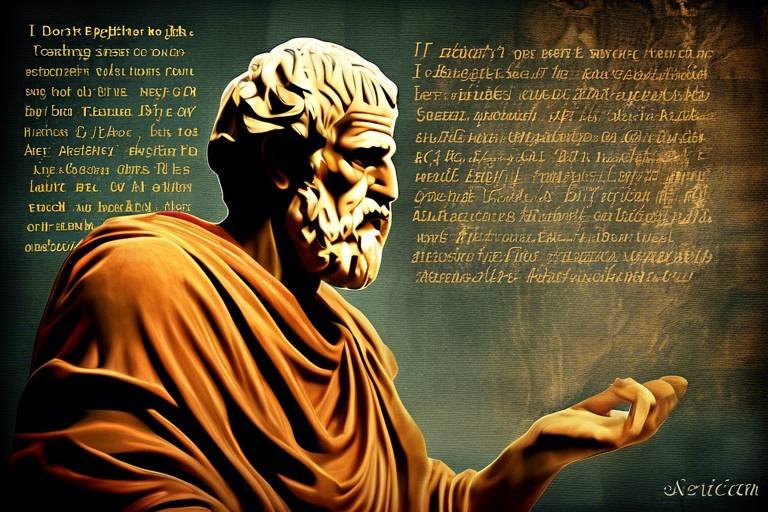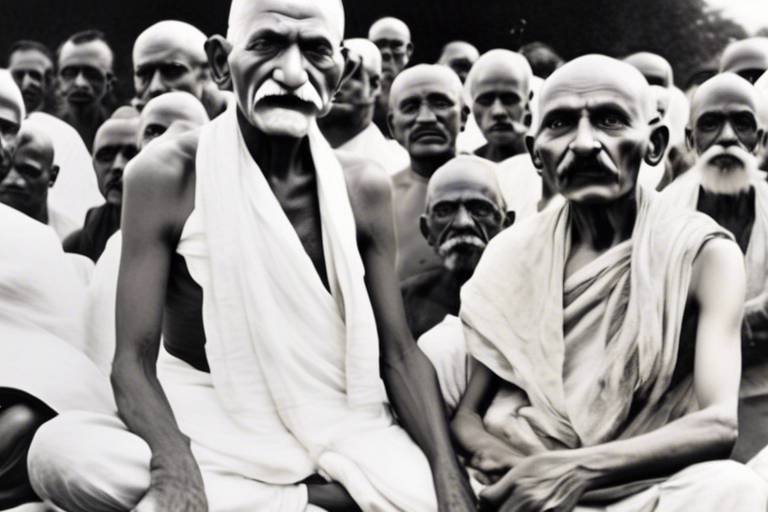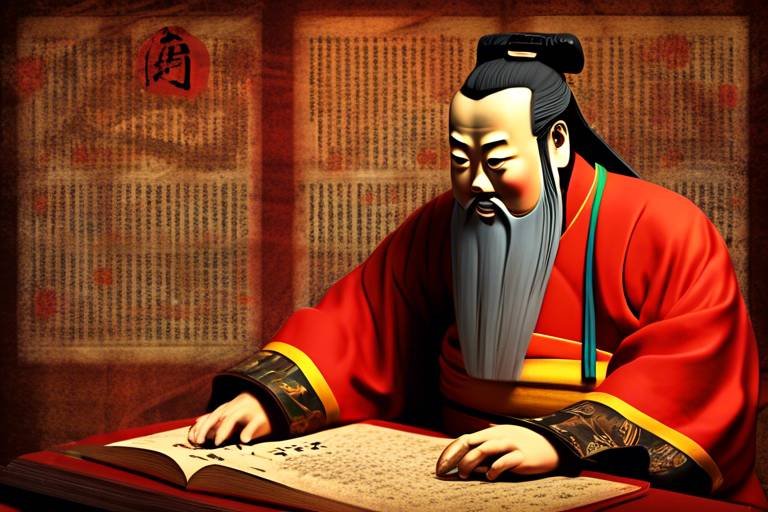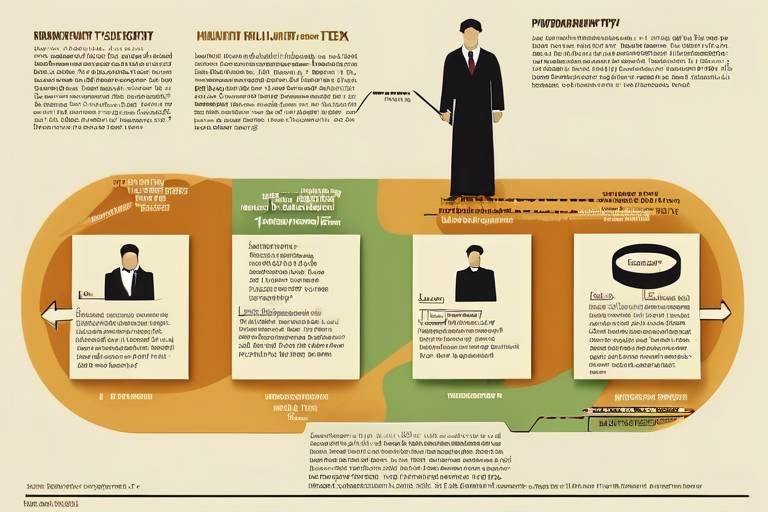Exploring Laotzu's Philosophy in Tao Te Ching
The teachings of Laotzu, encapsulated in the ancient text known as the Tao Te Ching, present a fascinating exploration of life, existence, and the universe. Laotzu, often regarded as the father of Taoism, invites readers to step into a realm of profound wisdom that transcends time and culture. His philosophy is not merely a collection of thoughts; it’s a way of living that emphasizes harmony, simplicity, and a deep connection with nature. Have you ever wondered how your life might change if you embraced the principles laid out in this timeless work? The Tao Te Ching offers insights that resonate even in our fast-paced, modern world, urging us to slow down and reflect on the essence of our existence.
At the heart of Laotzu's teachings is the concept of the Tao, often translated as "the Way." This idea represents the fundamental nature of the universe, the source from which all things arise, and the ultimate path of existence. Understanding the Tao is like discovering the underlying rhythm of life itself. It's the flow of the river, the whisper of the wind, and the silence of the stars. By aligning ourselves with the Tao, we can navigate the complexities of life with grace and ease. Imagine living in a way that feels effortless, where you are in sync with the world around you—this is the promise of Laotzu's philosophy.
Laotzu's work is rich with metaphors and analogies that challenge our conventional thinking. For instance, he often compares the Tao to water, emphasizing its softness yet undeniable strength. Water flows effortlessly around obstacles, adapting to the shape of its container, yet it can also carve through rock given enough time. This duality teaches us that true power lies not in force, but in adaptability and resilience. How often do we find ourselves struggling against the current of life, only to realize that surrendering to the flow might be the key to overcoming our challenges?
As we delve deeper into the Tao Te Ching, we uncover the principle of Wu Wei, or non-action. This concept doesn't imply passivity; rather, it encourages us to act in accordance with the natural order of things. By practicing Wu Wei, we can achieve a state of harmony that allows us to respond to life’s challenges with ease. Picture a skilled martial artist who moves fluidly, responding to an opponent's actions without forceful resistance. This is the essence of Wu Wei—an effortless engagement with life that brings about balance and tranquility.
In today's world, where chaos and noise often drown out our inner voice, Laotzu's teachings serve as a gentle reminder to return to simplicity and mindfulness. By embracing a simpler lifestyle, we can cultivate a sense of contentment that often eludes us in our pursuit of material success. Imagine waking up each day with a clear mind, free from the clutter of unnecessary distractions. This clarity allows us to appreciate life’s essentials—the beauty of a sunrise, the laughter of a friend, or the warmth of a loved one’s embrace.
Moreover, Laotzu emphasizes the importance of meditation and mindfulness as tools to connect with the Tao. Engaging in regular meditation can help us cultivate a deeper awareness of our thoughts and feelings, leading to a more peaceful and centered existence. Whether it’s through guided meditations, breath work, or simply sitting in silence, these practices can ground us in the present moment, allowing us to experience life fully.
As we explore Laotzu's philosophy, we also encounter the concept of Te, or virtue. Virtue, in this context, refers to the inherent qualities that lead us to live in accordance with the Tao. By embodying virtues such as humility, compassion, and integrity, we not only enhance our own lives but also contribute positively to the world around us. It’s like being a pebble tossed into a pond—the ripples of our virtuous actions can extend far beyond ourselves, influencing others in ways we may never fully comprehend.
In conclusion, the teachings of Laotzu in the Tao Te Ching offer profound insights that can transform our lives. By understanding the essence of the Tao, practicing Wu Wei, and embodying virtue, we can navigate the complexities of modern existence with grace and ease. So, the next time you feel overwhelmed by the chaos of life, take a moment to reflect on Laotzu's wisdom. Ask yourself: How can I align myself with the flow of the universe? What small steps can I take towards a simpler, more mindful existence? The answers may surprise you.
- What is the main message of the Tao Te Ching?
The main message revolves around living in harmony with the Tao, embracing simplicity, and practicing non-action. - How can I apply Wu Wei in my daily life?
By being more adaptable and responsive rather than forcing outcomes, you can practice Wu Wei in various situations. - What role does meditation play in Taoism?
Meditation helps cultivate mindfulness and a deeper connection to the Tao, enhancing inner peace. - How does the concept of virtue relate to modern life?
Embodying virtues like humility and compassion can lead to more fulfilling relationships and a positive impact on society.

The Essence of Tao
Understanding the fundamental nature of the Tao is crucial in grasping Laotzu's philosophy. The term "Tao" translates to "the way" or "the path," but its meaning transcends mere definition. It's like trying to describe the taste of water; you can talk about it, but until you experience it, you won't truly understand. The Tao represents the underlying principle that governs the universe, a force that flows through all things, connecting them in a harmonious dance of existence. It's the current that carries the river, the wind that guides the leaves, and the silence that envelops the mountains. In this context, the Tao is not a deity or a person but rather a cosmic order that invites us to align with its rhythm.
Laotzu teaches us that the essence of the Tao is found in its simplicity and its inherent nature of spontaneity. Just as a flower blooms without effort, the Tao encourages us to embrace our true selves without the burden of societal expectations. This principle is not just philosophical; it has real-life implications. When we align our actions with the natural flow of the Tao, we find ourselves in a state of effortless action, or wuwei. This does not mean being passive; rather, it signifies an active engagement with life that feels organic and unforced.
Moreover, the Tao is a reminder of the interconnectedness of all things. Just like a spider's web, where each strand is vital to the integrity of the whole, our lives are intertwined with those of others and the world around us. Recognizing this interconnectedness can lead to greater compassion and understanding, encouraging us to act with kindness and humility. As we navigate our lives, we must remember that every action we take has a ripple effect, influencing the world in ways we may not immediately see.
In contemporary life, the essence of the Tao invites us to slow down and observe the world around us. In a society that often glorifies speed and productivity, Laotzu's teachings encourage us to pause, reflect, and reconnect with the natural order of things. This can be as simple as taking a walk in the park, meditating under a tree, or even just taking a deep breath and appreciating the moment. By doing so, we can cultivate a deeper sense of peace and fulfillment, allowing the essence of the Tao to permeate our daily lives.
Ultimately, the essence of the Tao is about finding balance. It teaches us that life is a series of opposites—light and dark, joy and sorrow, action and rest. By embracing these dualities and recognizing their interdependence, we can navigate the complexities of life with greater ease and grace. Just as the yin-yang symbol illustrates, balance is not about eliminating one side but rather understanding how they coexist and complement each other. In this way, the Tao becomes a guiding force, leading us toward a more harmonious existence.
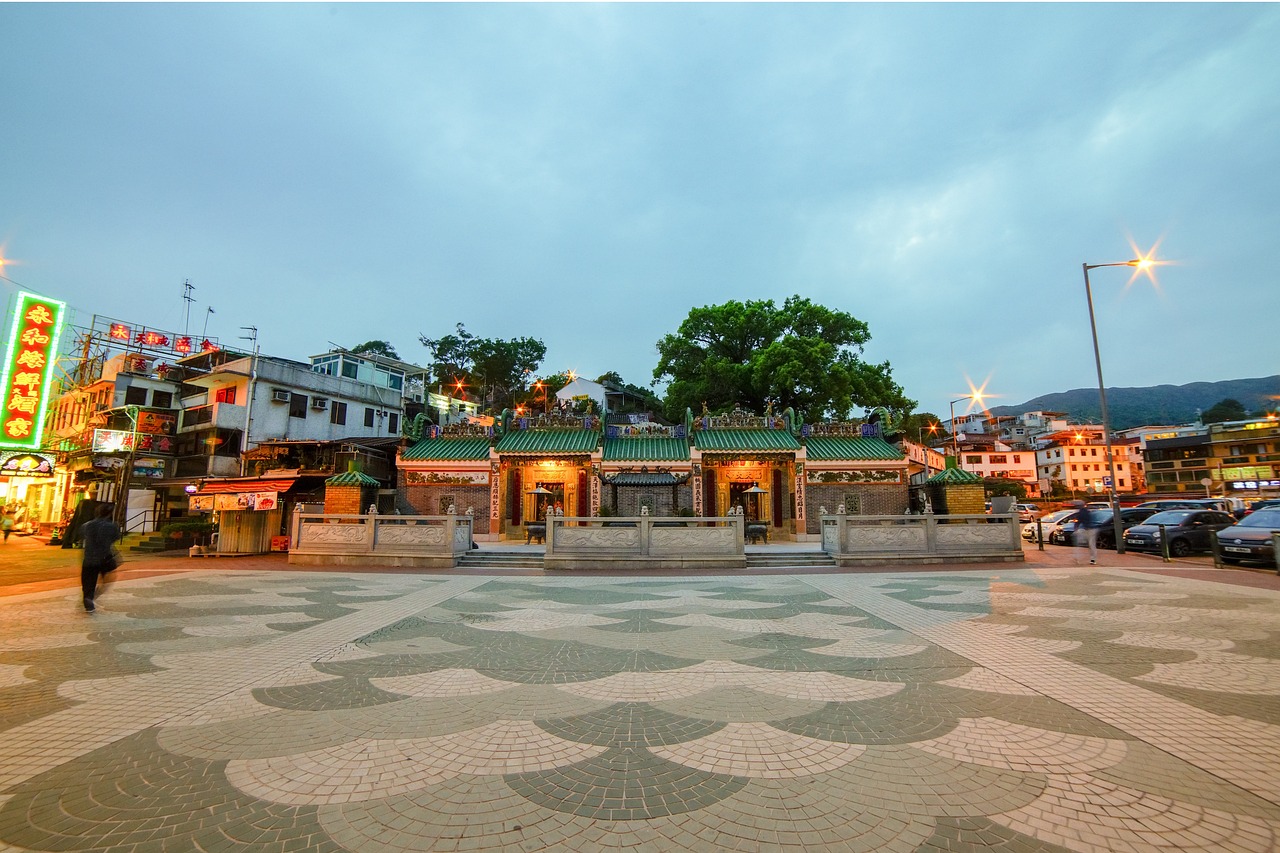
Wu Wei, often translated as "non-action" or "effortless action," is a fundamental concept in Laotzu's philosophy found in the Tao Te Ching. At first glance, the idea of "doing nothing" might seem counterintuitive, especially in a world that glorifies hustle and relentless productivity. However, embracing Wu Wei is about aligning oneself with the natural flow of life rather than forcing outcomes through sheer willpower. It's akin to a river that flows effortlessly around obstacles rather than crashing against them. This principle teaches us that sometimes, the best course of action is to step back, observe, and allow things to unfold naturally.
In practice, Wu Wei encourages us to cultivate a sense of awareness and presence. When we embrace this art of non-action, we become more attuned to our surroundings, allowing us to respond to situations with clarity and intention rather than reacting impulsively. Imagine a dancer moving gracefully across the stage; their movements seem effortless, yet they are deeply connected to the rhythm of the music. Similarly, by practicing Wu Wei, we can navigate life's complexities with a sense of ease and fluidity, making decisions that resonate with our true selves.
The implications of Wu Wei extend beyond personal well-being; they can transform our relationships and interactions with others. When we adopt a non-action mindset, we create space for others to express themselves freely. This approach fosters a sense of trust and collaboration, allowing for deeper connections and more meaningful exchanges. For example, in a workplace setting, a leader who embodies Wu Wei might encourage team members to share their ideas without fear of judgment, leading to innovative solutions that arise organically rather than through forced brainstorming sessions.
To further illustrate the concept of Wu Wei, consider the following table that contrasts traditional approaches with the Wu Wei mindset:
| Traditional Approach | Wu Wei Approach |
|---|---|
| Forceful action to achieve goals | Allowing goals to unfold naturally |
| Control over situations | Acceptance of life's flow |
| Striving for perfection | Embracing imperfection |
| Competition | Collaboration |
By understanding and applying Wu Wei in our daily lives, we can experience a profound transformation. Imagine waking up each day with a sense of calm and clarity, ready to embrace whatever comes your way without the weight of expectation. This doesn't mean abandoning our goals or aspirations; rather, it signifies a shift in how we pursue them. It’s about trusting the process and recognizing that sometimes the most powerful action is to let go and allow life to unfold.
In conclusion, Wu Wei is not about being passive or lazy; it’s about engaging with life in a way that feels natural and authentic. As we learn to practice this art of non-action, we not only enhance our own lives but also contribute to a more harmonious world. So, the next time you find yourself overwhelmed by the chaos of modern life, take a step back. Breathe. Trust in the flow. You might just find that the answers you seek are already within you, waiting to emerge effortlessly.
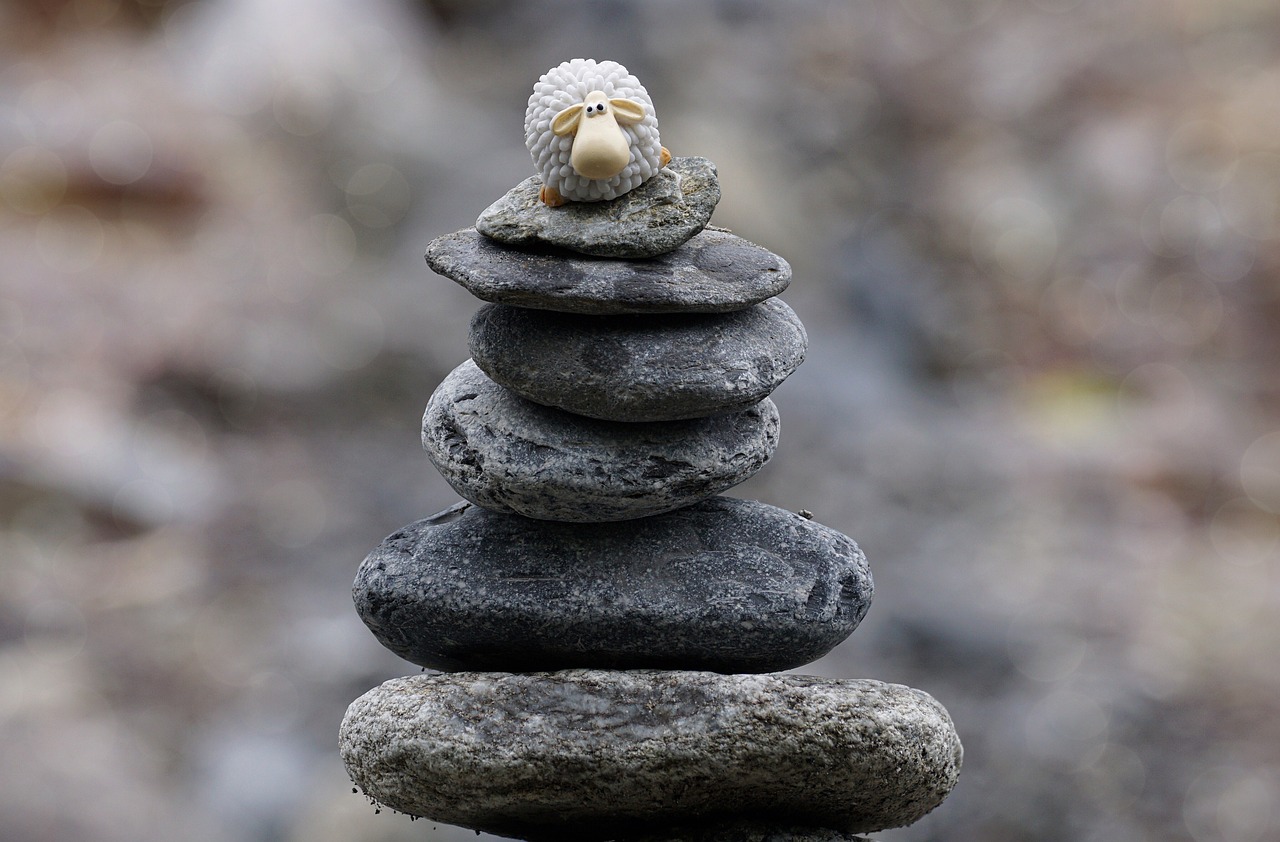
When we think about harmony with nature, it's like imagining a beautiful symphony where every note plays its part perfectly. Laotzu, through his teachings in the Tao Te Ching, emphasizes that we are not separate from the natural world; rather, we are an integral part of it. This interconnectedness is crucial for understanding how to live a balanced life. Just as a tree bends with the wind, we too must learn to adapt and flow with the rhythms of nature. But what does this really mean for us in our daily lives?
To truly embrace harmony with nature, we must first recognize the importance of observation. By taking time to observe the world around us, we can learn invaluable lessons. For instance, consider the way rivers carve their paths through mountains. They don’t force their way; instead, they gently flow, finding the easiest route. This teaches us that sometimes, the best approach in life is to go with the flow rather than resist it.
Moreover, Laotzu encourages us to cultivate a deep respect for the natural world. This can manifest in various ways:
- Practicing sustainability by reducing waste and conserving resources.
- Engaging in outdoor activities that foster a connection with nature, like hiking or gardening.
- Mindfully appreciating the beauty around us, from the smallest flower to the grandest mountain.
As we nurture this relationship, we begin to notice a shift within ourselves. Our stresses and worries often diminish when we immerse ourselves in nature's beauty. Think of it as a reset button for our minds. Just as a computer needs to reboot to function optimally, our minds require moments of tranquility found in nature to thrive.
Incorporating nature into our lives can be as simple as creating a small garden, taking regular walks in the park, or even just sitting quietly under a tree. These moments allow us to align ourselves with the Tao, the fundamental principle that underpins the universe. When we live in harmony with nature, we foster a sense of peace and well-being that resonates deeply within us.
Ultimately, embracing harmony with nature is not just about appreciating the beauty around us; it’s about understanding our place within the greater tapestry of life. Laotzu reminds us that by aligning our actions with the natural world, we can cultivate a life of balance and tranquility. So, the next time you step outside, take a moment to breathe deeply, observe your surroundings, and feel that connection to the world around you. You might just find that the answers you seek are waiting for you in the whispers of the wind and the rustle of the leaves.
Q: How can I start living in harmony with nature?
A: Begin by spending more time outdoors, observing the natural world. You can also reduce your ecological footprint by recycling, conserving water, and supporting sustainable practices.
Q: What are some simple ways to connect with nature?
A: Consider gardening, hiking, or simply taking walks in your local park. Even small actions, like planting a tree or spending time in your backyard, can foster a deeper connection.
Q: How does nature influence mental well-being?
A: Nature has a calming effect on the mind, reducing stress and anxiety. Spending time outdoors can improve mood and promote a sense of peace and tranquility.

The teachings of Laotzu in the Tao Te Ching resonate profoundly with the idea that simplicity leads to contentment. In a world that often glorifies complexity and excess, Laotzu invites us to strip away the unnecessary layers of our lives. Imagine your life as a cluttered room; the more you accumulate, the less space you have to breathe and appreciate what truly matters. By embracing simplicity, we can clear that clutter, both physically and mentally, allowing room for peace and joy.
At its core, simplicity isn’t just about having fewer possessions; it’s a mindset. It encourages us to focus on what is essential, fostering a deeper appreciation for the little things. For instance, consider the joy of a quiet morning with a cup of tea, the sound of birds chirping, or the warmth of the sun on your face. These moments become profound experiences when we choose to live simply, reminding us that happiness often resides in the ordinary.
Moreover, simplicity can enhance our relationships. When we eliminate distractions and prioritize meaningful connections, we cultivate deeper bonds with those around us. Instead of getting caught up in the chaos of social media or the hustle of daily life, we can engage in heartfelt conversations, share laughter, and create memories that matter. This shift not only enriches our lives but also aligns with the essence of the Tao, which emphasizes harmony and balance.
In practical terms, adopting a simpler lifestyle can take various forms. Here are a few ways to embrace simplicity:
- Declutter your living space: Start small by clearing out one room or even a single drawer.
- Limit your commitments: Focus on activities that bring you joy and fulfillment.
- Practice gratitude: Regularly reflect on what you appreciate in your life, shifting your focus from what you lack to what you have.
As we simplify our lives, we often find that contentment naturally follows. The art of contentment lies in recognizing that happiness is not found in external circumstances but in our internal state of being. Laotzu teaches us that when we stop chasing after fleeting desires and instead cultivate a sense of gratitude for what we already possess, we unlock a deeper level of satisfaction.
In conclusion, simplicity is not merely a lifestyle choice; it’s a pathway to a more fulfilling existence. By embracing Laotzu's teachings, we learn that the less we burden ourselves with the complexities of modern life, the more we can enjoy the beauty of simplicity and the contentment it brings. So, why not take a moment today to reflect on how you can simplify your life? You might just find that the key to happiness lies in less.
Q1: How can I start simplifying my life?
A1: Begin by identifying areas of your life that feel cluttered or overwhelming. Start with small steps, like decluttering a single space or reducing your commitments.
Q2: Is simplicity the same as minimalism?
A2: While they share similarities, simplicity is more about a mindset of valuing what truly matters, whereas minimalism often focuses on reducing possessions.
Q3: Can embracing simplicity improve my mental health?
A3: Yes, simplifying your life can reduce stress and anxiety, leading to improved mental well-being and a greater sense of peace.
Q4: How does simplicity relate to happiness?
A4: Simplicity allows you to focus on the present moment and appreciate life's small joys, which can lead to greater happiness and fulfillment.
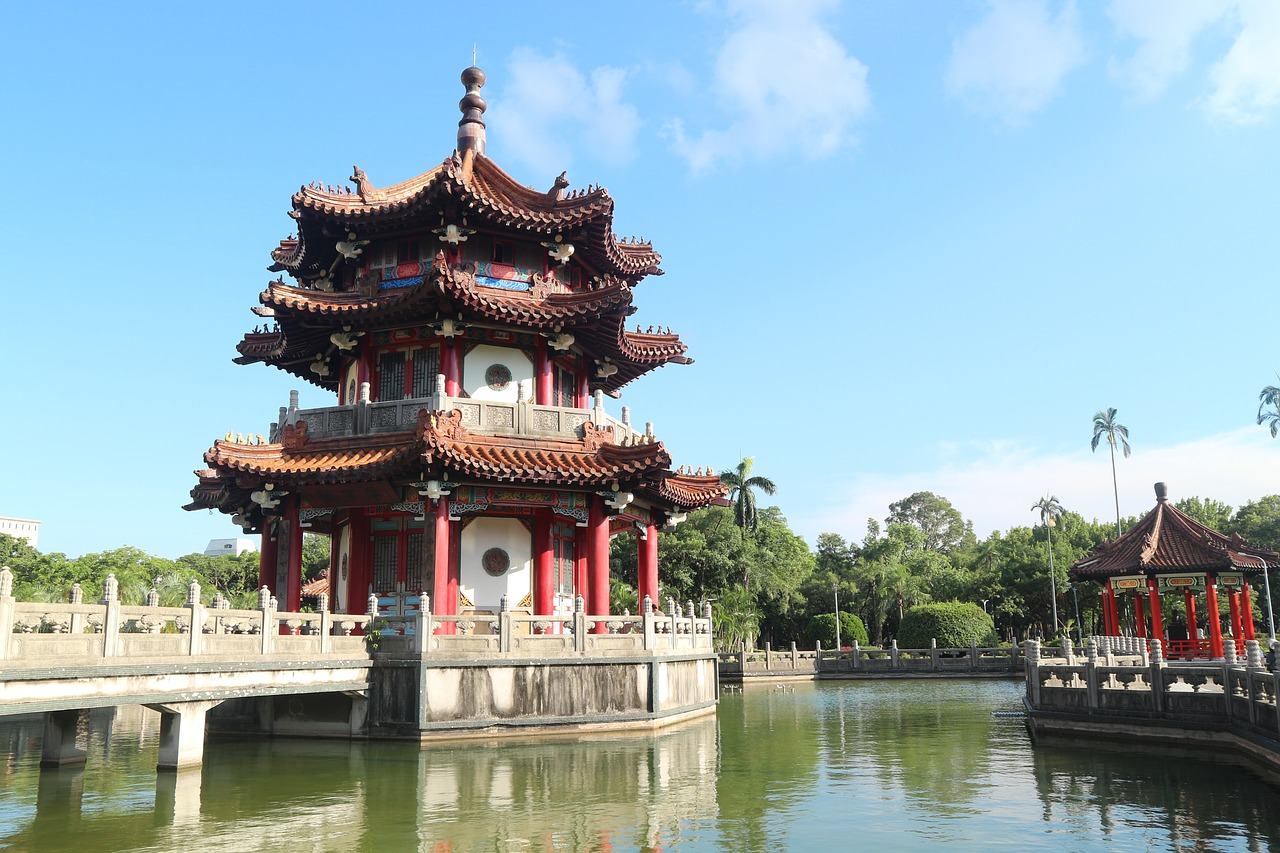
Meditation and mindfulness are not just buzzwords; they are powerful practices deeply rooted in Laotzu's teachings that can transform our daily lives. In the fast-paced world we live in, where distractions are abundant and stress seems to be a constant companion, finding a moment of peace can feel like searching for a needle in a haystack. But what if I told you that the key to serenity lies in the simplicity of the present moment? Laotzu understood this well, emphasizing that by quieting the mind, we can connect with the essence of the Tao.
At its core, meditation is about cultivating awareness and presence. It's like tuning a musical instrument; when we silence the noise around us, we can hear the subtle melodies of our thoughts and emotions. Laotzu encourages us to embrace this stillness, suggesting that through meditation, we can reflect on our true nature and align ourselves with the natural flow of the universe. Imagine being a leaf floating down a river, effortlessly carried along by the current. That’s what mindfulness can feel like when we let go of resistance and simply be.
There are various meditation techniques inspired by Laotzu’s philosophy, each offering unique pathways to mindfulness. Here are a few practices you might consider:
- Breath Awareness: Focus on your breath as it flows in and out. This simple practice grounds you in the present moment, helping to calm the mind.
- Nature Immersion: Spend time in nature, observing the surroundings. Whether it's a park or a forest, immersing yourself in nature can deepen your connection to the Tao.
- Mindful Walking: Take a walk with full awareness. Feel each step, notice the sensations in your body, and observe the world around you.
Engaging in these practices doesn’t require hours of your day; even a few minutes can make a significant difference. It’s about quality, not quantity. Just like a small stone can create ripples in a pond, small moments of mindfulness can reverberate throughout your day, leading to a more peaceful existence.
Incorporating meditation into your daily routine might seem daunting at first, but remember that every journey begins with a single step. Start small—perhaps with just five minutes of focused breathing each morning. As you gradually expand your practice, you may find that your ability to remain present and mindful in everyday situations improves remarkably. Over time, these moments of mindfulness can foster a profound sense of inner peace, allowing you to navigate life’s challenges with grace and ease.
Ultimately, meditation and mindfulness are about returning to the essence of who we are. They remind us to slow down, breathe, and connect with the world around us. Just as Laotzu taught, when we align ourselves with the Tao, we find harmony not only within ourselves but also in our interactions with others. So, why not take a moment today to pause, breathe, and simply be? You might be surprised at the tranquility that awaits.
1. What is the best time to practice meditation?
Many people find that early morning is an ideal time to meditate, as it sets a peaceful tone for the day. However, the best time is when you can consistently practice without interruptions.
2. Do I need to sit in a specific position to meditate?
While traditional meditation often involves sitting cross-legged, you can meditate in any comfortable position. The key is to maintain a straight posture to facilitate breathing.
3. How long should I meditate for?
Start with just 5-10 minutes and gradually increase the duration as you become more comfortable. The important thing is to establish a routine that works for you.
4. Can I meditate if I have a busy mind?
Absolutely! It's normal to have thoughts during meditation. The goal is not to eliminate thoughts but to observe them without attachment. With practice, your mind will become calmer.
5. Is mindfulness the same as meditation?
While mindfulness is often practiced during meditation, it can also be applied to daily activities. Mindfulness is about being fully present and engaged in the moment, regardless of what you're doing.

When we dive into the essence of Laotzu's philosophy, we uncover the profound concept of virtue, or Te, which serves as a guiding principle in the Tao Te Ching. Virtue is not merely a set of moral guidelines; it is a way of being that resonates deeply with the natural order of the universe. Imagine virtue as a river flowing effortlessly through the landscape of our lives, shaping our actions and decisions while adapting to the contours of our surroundings. It emphasizes authenticity and integrity, urging us to align our inner values with our outward behaviors.
At its core, virtue embodies qualities such as humility, compassion, and simplicity. These qualities are not just traits to aspire to; they are essential for achieving a harmonious existence. Laotzu teaches us that by embodying virtue, we can tap into a greater sense of purpose and connection with the world around us. For instance, when we practice humility, we open ourselves to learning and growth, allowing us to see beyond our ego and appreciate the contributions of others. In this way, virtue becomes a bridge that connects us to our community and the universe.
To further explore the nature of virtue, consider the following key aspects that Laotzu emphasizes:
- Authenticity: Being true to oneself fosters genuine connections and trust with others.
- Compassion: Cultivating empathy allows us to understand and support those around us, creating a ripple effect of kindness.
- Simplicity: Embracing a straightforward lifestyle helps us appreciate the beauty in the mundane and reduces unnecessary stress.
By integrating these virtues into our daily lives, we not only enhance our personal well-being but also contribute to the greater good of society. Laotzu suggests that true virtue is not about striving for recognition or accolades; rather, it is about living in harmony with the Tao and allowing our actions to flow naturally from a place of inner peace. This effortless way of being is what makes virtue so powerful—it transcends the superficial and connects us to the deeper rhythms of life.
In a world that often prioritizes ambition and competition, Laotzu's teachings remind us of the strength found in gentleness and humility. Virtue, therefore, is not a destination but a continuous journey, one that invites us to reflect on our actions and their impacts on ourselves and others. By nurturing these qualities within ourselves, we can become a source of positive influence in our communities, embodying the very essence of the Tao.
As we navigate our lives, let's remember that the nature of virtue is akin to tending a garden. It requires patience, care, and a commitment to growth. When we cultivate virtue, we create an environment where peace and harmony can flourish, allowing us to live authentically and meaningfully.
- What is the significance of virtue in Taoism?
Virtue, or Te, is a fundamental aspect of Taoism that emphasizes living in harmony with the Tao. It encourages individuals to embody qualities such as humility and compassion, fostering a deeper connection with themselves and the universe. - How can I practice virtue in my daily life?
You can practice virtue by being authentic, showing compassion towards others, and embracing simplicity. Reflecting on your actions and their impacts can also help you align with virtuous living. - Is virtue a fixed quality or can it change?
Virtue is not a fixed quality; it is a continuous journey. Individuals can cultivate and develop their virtues over time through self-reflection and conscious practice.

When we think about leadership, we often picture someone at the helm, making decisions and steering the ship. However, Laotzu's philosophy offers a refreshing perspective that flips this notion on its head. Instead of a commanding figure, Laotzu presents a model of leadership grounded in humility and wisdom. This approach emphasizes that true leaders are not those who seek power for themselves but rather those who empower others. In a world where the loudest voice often gets the most attention, Laotzu's teachings remind us that the most effective leaders are often the quietest, guiding their followers with gentle strength.
At the heart of Laotzu's perspective is the concept of servant leadership. This style of leadership prioritizes the needs of the community above personal ambitions. Imagine a gardener tending to a garden, nurturing each plant to ensure it thrives. Similarly, a servant leader fosters growth in their team, helping individuals realize their potential. They listen more than they speak, creating an environment where everyone feels valued and empowered to contribute. This approach not only cultivates loyalty but also enhances overall productivity, as team members feel a sense of belonging and purpose.
In contemporary settings, the application of Laotzu's leadership principles can be transformative. Leaders who embody these values often find themselves building stronger, more resilient teams. They recognize that leadership is not about being the loudest voice in the room but about being the most attentive and compassionate. By fostering an atmosphere of trust and collaboration, these leaders can navigate challenges with grace and ease.
Moreover, Laotzu’s insights into leadership extend beyond individual teams. They resonate on a larger scale, influencing organizational cultures and even societal structures. For instance, organizations that embrace these principles often see a shift towards more ethical practices, where decisions are made with the well-being of all stakeholders in mind. This holistic approach not only benefits the organization but also contributes positively to the community and environment.
In today's fast-paced world, where the pressure to achieve results can overshadow the importance of ethical leadership, Laotzu's teachings serve as a much-needed reminder. As we navigate our personal and professional lives, we should ask ourselves: Are we leading with integrity? Are we prioritizing the needs of others? By reflecting on these questions, we can become more effective leaders who inspire change and foster a sense of community.
Ultimately, Laotzu's vision for leadership is about creating a legacy of compassion and support. It's about recognizing that true power lies not in control, but in the ability to uplift others. As we embrace these principles, we can cultivate a new generation of leaders who are not only successful but also deeply connected to the world around them.
- What is servant leadership? Servant leadership is a leadership philosophy where the primary goal of the leader is to serve others, focusing on the growth and well-being of people and the communities to which they belong.
- How can Laotzu's teachings be applied today? Laotzu's teachings can be applied today by prioritizing humility, compassion, and community needs in leadership roles, fostering environments where collaboration and trust flourish.
- What is the significance of humility in leadership? Humility in leadership allows leaders to connect with their team members on a personal level, encouraging open communication and collaboration, which leads to a more engaged and motivated workforce.

In the grand tapestry of leadership philosophies, Laotzu’s concept of servant leadership stands out like a vibrant thread, weaving together the ideals of humility and community. But what exactly does it mean to lead through servitude? At its core, this approach flips the traditional notion of leadership on its head. Instead of placing the leader at the pinnacle of power, it emphasizes the importance of serving others. Imagine a gardener tending to their plants; the gardener’s success is not measured by how tall they stand, but by how well they nurture the growth of their garden. Similarly, a servant leader prioritizes the needs of their team, fostering an environment where everyone can thrive.
Laotzu believed that true strength lies in humility. A leader who adopts this mindset understands that their role is not to dictate but to support. This can manifest in various ways, such as:
- Listening to the concerns and ideas of team members, valuing their input.
- Empowering others to take initiative and make decisions, which cultivates trust and collaboration.
- Modeling ethical behavior, setting a standard for others to follow.
By embodying these principles, leaders can create a culture of mutual respect and cooperation. The emphasis on servitude encourages leaders to see themselves as part of a larger whole, rather than isolated figures of authority. This approach not only enhances team morale but also drives productivity and innovation. When team members feel valued and supported, they are more likely to contribute their best ideas and efforts.
Moreover, servant leadership aligns beautifully with the natural world, a theme deeply rooted in Laotzu's teachings. Just as ecosystems thrive on interdependence, so too can organizations flourish when leaders prioritize the well-being of their members. This interconnectedness fosters a sense of belonging and purpose, which can be incredibly motivating. When people feel that their contributions matter, they are more inclined to go above and beyond.
In a world that often glorifies the lone hero, Laotzu’s philosophy serves as a refreshing reminder that the most impactful leaders are those who serve. By adopting this mindset, leaders can inspire a ripple effect of kindness and cooperation that transcends their immediate circle, ultimately contributing to a more harmonious society. The question remains: are we ready to embrace this profound shift in how we view leadership?
- What is servant leadership? Servant leadership is a philosophy where the primary goal of the leader is to serve others, prioritizing the needs of their team and community.
- How can I become a servant leader? Start by actively listening to your team, empowering them to take initiative, and modeling ethical behavior.
- What are the benefits of servant leadership? Benefits include improved team morale, increased productivity, and a more collaborative work environment.
- How does Laotzu's philosophy influence modern leadership? Laotzu's philosophy encourages leaders to focus on humility, service, and community, which are essential for effective leadership today.
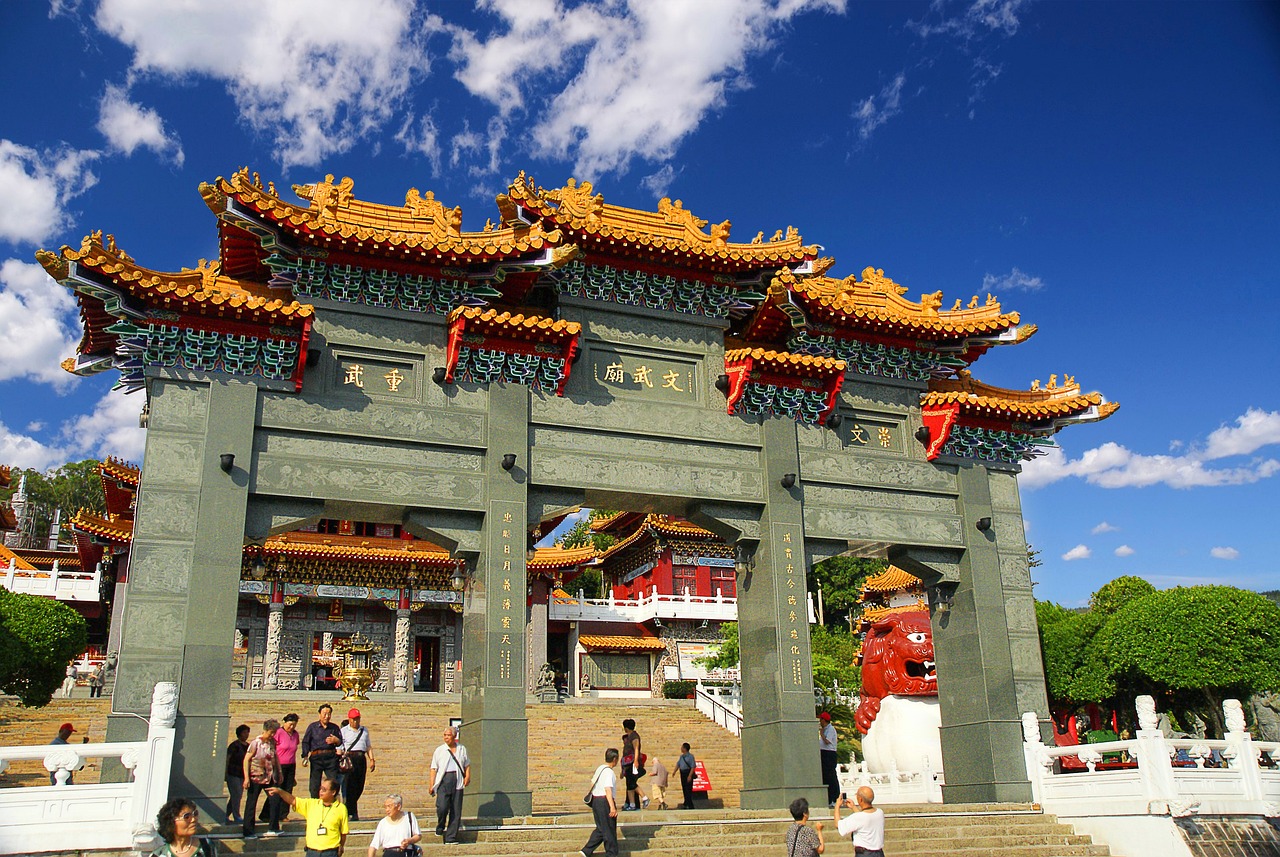
Taoism, with its roots deeply embedded in the teachings of Laotzu, has transcended time and geography, leaving an indelible mark on modern thought. In an era where fast-paced living often overwhelms our senses, the wisdom of the Tao Te Ching serves as a gentle reminder to pause, reflect, and realign ourselves with the natural flow of life. This philosophy encourages us to embrace simplicity, cultivate inner peace, and foster a harmonious relationship with the world around us. But how exactly does this ancient wisdom resonate in our contemporary society?
One of the most significant influences of Taoism is its emphasis on balance and harmony. In today’s chaotic world, many individuals find themselves caught in the relentless pursuit of success, often neglecting their mental and emotional well-being. Taoist principles advocate for a more balanced approach to life, encouraging us to prioritize our health and happiness over material gains. This shift in perspective is evident in various modern wellness practices, such as yoga and mindfulness meditation, which draw heavily from Taoist teachings.
Moreover, the concept of wū wèi, or non-action, has found its way into contemporary discussions about productivity and effectiveness. Contrary to the common belief that constant activity equates to success, Taoism teaches us that sometimes, the best course of action is to allow things to unfold naturally. This idea resonates with modern thinkers who advocate for a more intuitive approach to problem-solving, emphasizing the importance of patience and observation over forceful intervention.
In the realm of leadership, the influence of Taoism is equally profound. Today’s leaders are increasingly recognizing the value of servant leadership, a concept that aligns closely with Laotzu’s teachings. By prioritizing the needs of their teams and communities, leaders can foster a culture of trust and collaboration. This approach not only enhances productivity but also cultivates a sense of belonging and purpose among team members. The modern business landscape is beginning to embrace these principles, moving away from traditional hierarchical models towards more inclusive and empathetic leadership styles.
Furthermore, Taoism’s impact extends into the fields of environmentalism and sustainability. As we face unprecedented challenges related to climate change and ecological degradation, the Taoist understanding of our interconnectedness with nature has never been more relevant. By advocating for a respectful and harmonious relationship with the environment, Taoism inspires individuals and organizations to adopt sustainable practices that honor the Earth. This shift towards eco-consciousness echoes Laotzu’s teachings, urging us to live in accordance with the natural world rather than in opposition to it.
In summary, the teachings of Laotzu are not mere relics of the past; they are a source of wisdom that continues to shape modern thought and practices. By embracing the principles of Taoism, we can cultivate a more balanced, harmonious, and sustainable way of living. As we navigate the complexities of contemporary life, let us remember the profound insights of the Tao Te Ching and allow them to guide us towards a more fulfilling existence.
- What is Taoism? Taoism is a philosophical and spiritual tradition that emphasizes living in harmony with the Tao, which is the fundamental nature of the universe.
- How does Taoism influence modern wellness practices? Taoism's focus on balance and mindfulness has inspired many contemporary practices like yoga and meditation.
- What is wū wèi? Wū wèi is the concept of 'non-action' or 'effortless action', encouraging individuals to align with the natural flow of life rather than forcing outcomes.
- How can Taoism inform leadership styles today? Taoism promotes servant leadership, which prioritizes the well-being of team members and fosters a collaborative work environment.
- What role does Taoism play in environmentalism? Taoism advocates for a respectful relationship with nature, inspiring sustainable practices that honor the interconnectedness of all life.
Frequently Asked Questions
- What is the Tao according to Laotzu?
The Tao, as presented by Laotzu in the Tao Te Ching, represents the fundamental nature of the universe and the source of all existence. It's often described as a flowing force that connects everything in life, emphasizing harmony and balance.
- What does Wu Wei mean?
Wu Wei translates to "non-action" or "effortless action." It encourages individuals to align with the natural flow of life rather than forcing things to happen. By practicing Wu Wei, one can achieve a state of peace and harmony, allowing life to unfold naturally.
- How can I connect with nature according to Taoism?
Connecting with nature in Taoism involves recognizing and respecting the natural world around you. This can be achieved through mindful practices like spending time outdoors, observing natural rhythms, and understanding the interdependence of all life forms, which fosters a deeper connection to the Tao.
- Why is simplicity important in Laotzu's philosophy?
Simplicity is crucial because it allows individuals to focus on what truly matters in life. By stripping away the unnecessary complexities, one can cultivate greater contentment and appreciation for the essentials, leading to a more fulfilling and joyful existence.
- What role does meditation play in Taoism?
Meditation is a vital practice in Taoism for connecting with the Tao. It helps cultivate mindfulness, inner peace, and a deeper understanding of oneself. Various meditation techniques inspired by Laotzu's teachings can assist in achieving a tranquil state of mind.
- What qualities define virtue (Te) in Taoism?
Virtue, or Te, is characterized by qualities such as humility, compassion, and integrity. Embodying these traits leads to a harmonious life and fosters positive relationships with others, aligning oneself with the principles of the Tao.
- How does Laotzu's philosophy influence modern leadership?
Laotzu's insights on leadership emphasize humility and wisdom over power and control. Modern leaders can apply these principles by adopting a servant leadership approach, prioritizing the needs of their community, and inspiring others through selflessness.
- In what ways has Taoism influenced contemporary thought?
Taoism continues to influence various fields, including spirituality, psychology, and environmentalism. Its teachings on balance, harmony, and interconnectedness resonate in modern discussions about sustainability and personal well-being, highlighting its relevance today.




